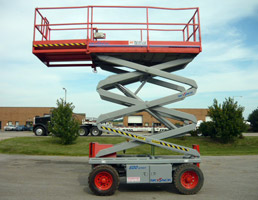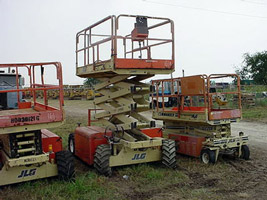 Hydraulic lifts, especially scissor lifts that came from the CanLift JLG Inventory, are the epitome workplace functionality and ingenious engineering. They were created in order to make construction and material transportation easier, especially in industrial and commercial establishments. However, accidents may still occur despite the safety measures being employed by most operators – mostly caused by employee negligence and recklessness. With that said, here are some of the safety aspects and procedures that you must take note of while operating scissor lifts:
Hydraulic lifts, especially scissor lifts that came from the CanLift JLG Inventory, are the epitome workplace functionality and ingenious engineering. They were created in order to make construction and material transportation easier, especially in industrial and commercial establishments. However, accidents may still occur despite the safety measures being employed by most operators – mostly caused by employee negligence and recklessness. With that said, here are some of the safety aspects and procedures that you must take note of while operating scissor lifts:
Check the floor or the surface
In operating scissor lifts, you need to check if the ground it is being driven or pushed is conducive for transport. This is so because these surfaces can either determine and accident-free or an accident prone workplace. Here are some of the qualities that determine if the flooring is safe or not:
- Flat and even – all the surfaces a scissor lift are on should be flat and even, considering that bumps and even little sticks and stones are able to cause it to tip over, which could potentially cause extreme damage and injury to some workers.
- Hard and dry – it is recommendable to only let scissor lifts operate on concrete surfaces which are in tip-top shape, considering the fact that soft ground, like those in sports fields, are unstable and may cause unfortunate incidents. It should also be dry because obviously, a wet surface is never a safe palace to be working in.
- Spotless – the floor or surface should be free of debris, even fingernail sized particles, in order to avoid the occurrences of potentially damaging incidents.
 Follow the weight limit
Follow the weight limit
Like all lift equipment, scissor lifts possess a weight limit, which can be seen on the machine’s exterior or on the user manual. You need to be able to follow it, considering that over boarding or going above the weight limit is tantamount to recklessness. It could cause the lift to tip over, fall, or cause a mechanism failure in the hydraulic systems. Also remember to evenly distribute the weight of the materials on the platform, just to be safe.
Only use it for its purpose
There was a case wherein a college student died because a scissor lift tipped over while he was filming college football practice. The winds that day were over 80 kilometers per hour and it was the primary cause of the incident. In this, we can learn that scissor lifts should only be used for specific purposes, such as being a mobile scaffolding unit, a way to reach elevated areas or to transport materials to the said area. It should never be used as a stage or a viewing platform, especially during bad weather.
Other safety measures that you should take note of include not using it if the guardrails are not present (for obvious reasons), only let it be handled by trained professionals and workers and to remind them to always wear safety equipment like harnesses and helmets, in order to minimize injuries. Remember, no matter how scissor lifts are designed for safety if the operator is reckless, accidents are bound to happen.
